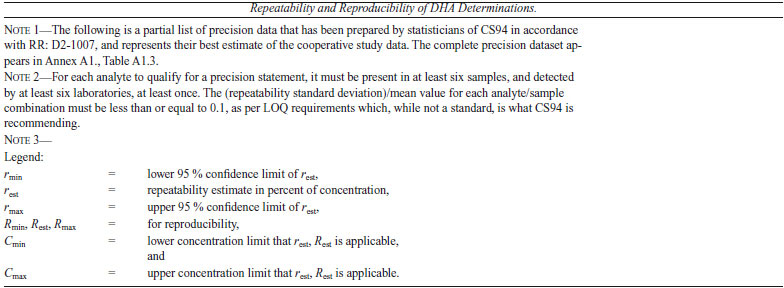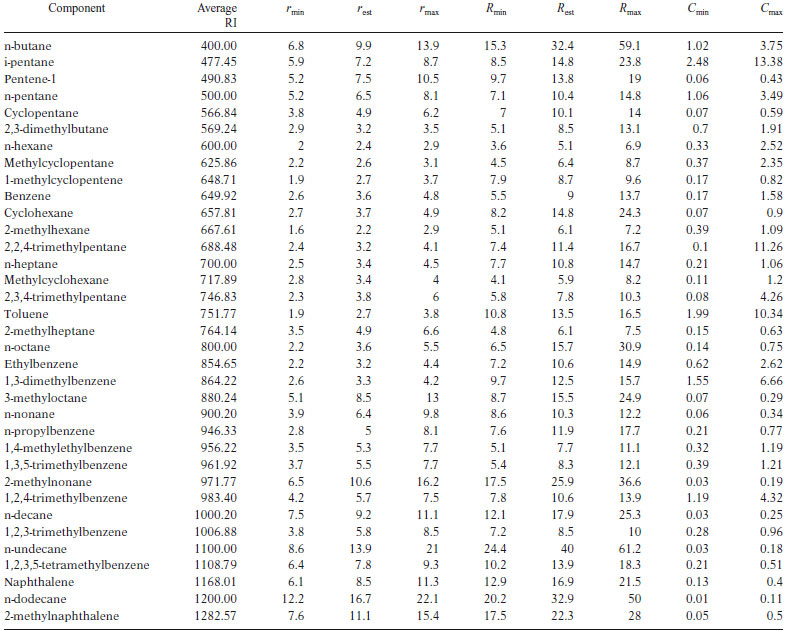EXPLANATION
Knowledge of the specified individual component composition (speciation) of gasoline fuels and blending stocks is useful for refinery quality control and product specification. Compliance in these areas may be determined through the use of this test method. This test method covers the determination of individual hydrocarbon components of spark-ignition engine fuels and their mixtures containing oxygenate blends (MTBE, ETBE, ethanol, etc.) with boiling ranges up to 225° C. Other light liquid hydrocarbon mixtures typically encountered in petroleum refining operations, such as blending stocks (napthas, reformats, alkylates, etc.) may also be analyzed. Individual component concentrations and precisions are determined in the range 0.01 to approximately 30 mass %. The test method also determines methanol, ethanol, t-butanol, MTBE, ETBE, TAME in engine fuels in the concentration range of 1 to 30 mass %.
TEST SUMMARY
A representative sample of the petroleum liquid is introduced into a gas chromatograph equipped with an open tubular (capillary) 100 meter column coated with a methyl silicone liquid phase modified with a capillary precolumn. Helium carrier gas transports the vaporized sample through the column, in which it is partitioned into individual components which are sensed with a flame ionization detector as they elute from the end of the column. The detector signal is presented on a strip chart recorder or digitally, or both, by way of an integrator or integrating computer. Each eluting component is identified by comparing its retention time to that established by analyzing reference standards or samples under identical conditions. The concentration of each component in mass % is determined by normalization of the peak areas after correction with detector response factors. Unknown components are reported as a total unknown mass %.
TEST PRECISION





